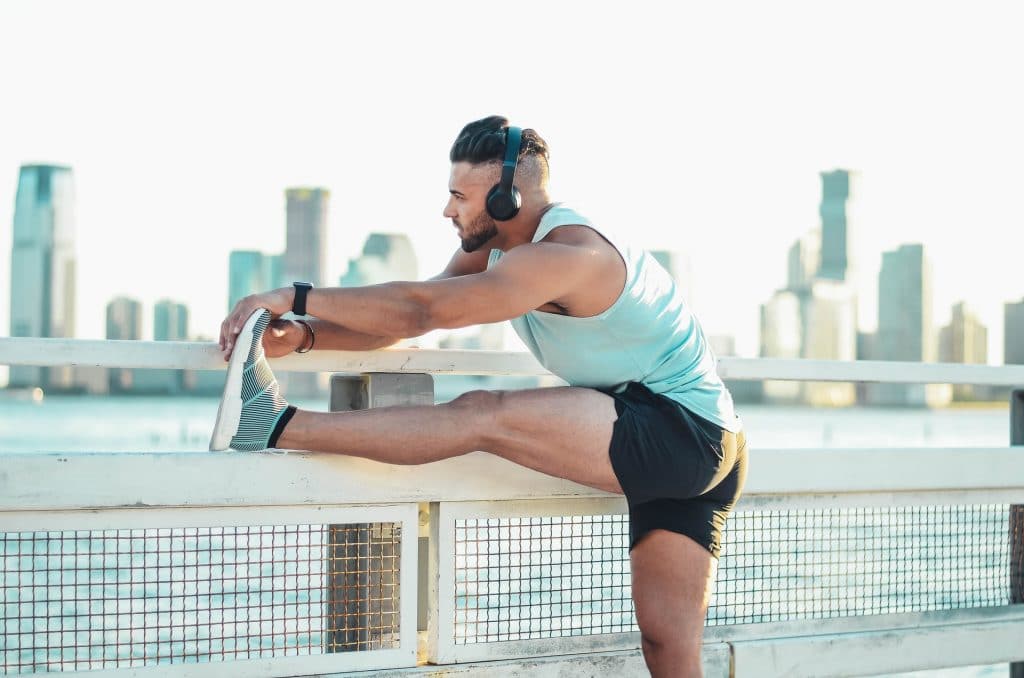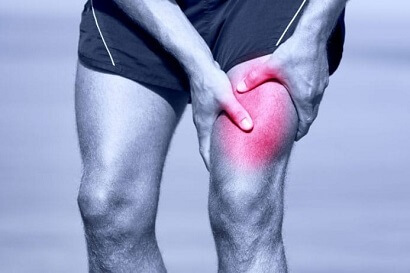Understanding Quadriceps Soreness: Causes and Prevention
Quadriceps soreness, also known as quad soreness, is a common issue experienced by individuals who engage in physical activities, particularly intense workouts, running, or weightlifting. This discomfort can be attributed to various factors, such as muscle imbalances, insufficient warm-ups, and poor stretching techniques. To prevent quad soreness, it is crucial to adopt a proactive approach that includes proper warm-ups, cool-downs, and progressive training.
Immediate Relief Techniques for Quadriceps Discomfort
When dealing with quadriceps soreness, it’s essential to address the discomfort promptly to facilitate recovery and minimize the impact on your daily activities or training routine. Several immediate relief techniques can help alleviate muscle tension and inflammation. These methods include self-myofascial release, static stretching, and cold therapy.
Self-Myofascial Release
Self-myofascial release, or SMR, is a technique that involves applying pressure to tight or sore muscle areas using tools such as foam rollers, massage balls, or even your hands. By applying pressure to these trigger points, you can help release tension, break up adhesions, and improve circulation, which in turn promotes muscle recovery and soreness reduction.
Static Stretching
Static stretching involves holding a stretch in a particular position for a set duration, usually between 15 to 30 seconds. This type of stretching can help alleviate quadriceps soreness by increasing muscle flexibility, reducing muscle tension, and enhancing overall range of motion. It is crucial to perform static stretches gently and avoid bouncing or forceful movements, which may exacerbate soreness and increase the risk of injury.
Cold Therapy
Cold therapy, also known as cryotherapy, is a technique that involves applying cold temperatures to the affected area to reduce inflammation and numb the pain. Cold therapy can be administered using ice packs, cold compresses, or even cold baths. By constricting blood vessels and decreasing blood flow to the affected area, cold therapy can help alleviate quadriceps soreness, minimize swelling, and promote healing.
Active Recovery Strategies to Accelerate Muscle Recovery
Integrating active recovery strategies into your routine is crucial for accelerating muscle recovery and reducing quadriceps soreness. These techniques involve engaging in light activities or exercises that promote blood flow, enhance flexibility, and alleviate muscle tension without causing further fatigue or damage. Some effective active recovery strategies include light cardio, cross-training, and yoga.
Light Activities
Participating in light activities, such as walking, cycling, or swimming, can help improve circulation, reduce muscle stiffness, and promote healing after intense workouts. These low-impact exercises can also help maintain your fitness level without placing additional stress on your quadriceps, allowing them to recover more effectively.
Cross-Training
Cross-training involves incorporating various exercises or sports into your training routine to target different muscle groups and reduce the risk of overuse injuries. By engaging in cross-training activities, you can continue to challenge your body and maintain your fitness level while giving your quadriceps an opportunity to recover and rebuild.
Yoga
Yoga is a form of exercise that combines physical postures, breathing techniques, and meditation to promote flexibility, strength, and relaxation. Practicing yoga can help alleviate quadriceps soreness by increasing muscle flexibility, reducing muscle tension, and improving overall range of motion. Additionally, the deep breathing and meditation aspects of yoga can help reduce stress and anxiety, further facilitating muscle recovery and relaxation.
Nutritional Approaches to Support Muscle Recovery
Nutrition plays a vital role in muscle recovery and soreness reduction, as it provides the necessary building blocks for muscle repair, growth, and overall health. To support your body’s recovery process and alleviate quadriceps soreness, consider incorporating specific foods, supplements, and hydration practices into your routine.
Foods for Muscle Recovery
Consuming a balanced diet rich in protein, carbohydrates, and healthy fats can help promote muscle recovery and reduce soreness. Some muscle-recovery-friendly foods include lean meats, fish, eggs, dairy products, whole grains, fruits, vegetables, nuts, and seeds. These foods provide essential nutrients, such as amino acids, vitamins, minerals, and antioxidants, that support muscle repair, reduce inflammation, and enhance overall recovery.
Supplements for Muscle Recovery
Various supplements can aid in muscle recovery and soreness reduction, including branched-chain amino acids (BCAAs), glutamine, and omega-3 fatty acids. BCAAs and glutamine are essential amino acids that help promote muscle protein synthesis, reduce muscle breakdown, and alleviate soreness. Omega-3 fatty acids, found in fish oil supplements, have anti-inflammatory properties that can help reduce muscle inflammation and soreness.
Hydration Practices for Muscle Recovery
Proper hydration is crucial for muscle recovery and soreness reduction, as water helps regulate body temperature, transport nutrients, and remove waste products from the body. To optimize hydration, aim to consume at least 8 to 10 cups of water per day and increase your intake based on your activity level, climate, and individual needs. Additionally, consider consuming electrolyte-rich beverages, such as coconut water or sports drinks, to replenish lost electrolytes during intense workouts or prolonged physical activities.
Rest and Sleep: The Foundation of Muscle Recovery
Rest and sleep are essential components of any muscle recovery and soreness reduction strategy. Adequate rest and sleep allow your body to repair and rebuild muscle tissue, balance hormones, and consolidate memories and skills, promoting overall health and performance. To optimize rest and sleep, consider the following tips and strategies.
Tips for Optimizing Sleep Quality and Duration
Establishing a consistent sleep schedule, creating a relaxing bedtime routine, and maintaining a sleep-conducive environment can significantly improve sleep quality and duration. Aim to go to bed and wake up at the same time each day, even on weekends, and allow for at least 7 to 9 hours of sleep per night. Additionally, avoid stimulating activities, such as using electronic devices or engaging in intense workouts, before bedtime, and create a calming bedtime routine that includes activities such as reading, taking a warm bath, or practicing relaxation techniques like deep breathing or meditation.
Strategies for Managing Training Schedules
Effective training schedule management is crucial for allowing adequate rest and recovery time between workouts. To optimize your training schedule, consider alternating between high-intensity and low-intensity workouts, incorporating rest days or active recovery days, and listening to your body’s signals for fatigue or overtraining. By balancing your training load and recovery needs, you can reduce the risk of quadriceps soreness, injury, and burnout, and promote long-term muscle health and performance.
Foam Rolling and Massage Techniques for Quadriceps
Foam rolling and massage techniques can provide significant relief from quadriceps soreness by releasing muscle tension, breaking up adhesions, and improving circulation. By incorporating these self-myofascial release methods into your recovery routine, you can accelerate muscle recovery, enhance flexibility, and promote overall muscle health.
Foam Rolling Techniques
Foam rolling involves using a foam roller, massage ball, or other self-myofascial release tools to apply pressure to tight or sore muscle areas. To foam roll your quadriceps, follow these steps:
- Place the foam roller on the floor and position your quadriceps on top of it.
- Support your body weight with your hands or forearms, and gently roll your quadriceps along the foam roller, pausing on any tender spots or trigger points.
- Apply moderate pressure to these areas for 30 to 60 seconds, or until the tension subsides.
- Repeat the process for the entire length of your quadriceps, including the inner and outer thigh muscles.
Massage Techniques
Professional massage therapy can offer additional benefits for addressing quadriceps soreness, as massage therapists can apply targeted pressure, stretches, and techniques to release muscle tension and promote healing. Some common massage techniques for quadriceps soreness include Swedish massage, deep tissue massage, and sports massage. When selecting a massage therapist, look for a licensed and experienced professional with expertise in treating muscle soreness and injuries.
Strength Training and Balance Exercises to Prevent Quadriceps Soreness
Incorporating strength training and balance exercises into your fitness routine can help prevent quadriceps soreness by improving muscle imbalances, flexibility, and overall muscle health. By focusing on these exercises, you can reduce the risk of soreness and injury, and promote long-term muscle health and performance.
Strength Training Exercises
Strength training exercises, such as squats, lunges, and leg presses, can help build muscular endurance, power, and stability in the quadriceps. By regularly engaging in these exercises, you can improve muscle imbalances, increase flexibility, and reduce the risk of soreness and injury. When performing strength training exercises, focus on proper form, alignment, and control, and gradually increase the intensity and volume of your workouts to promote progressive overload and continuous improvement.
Balance Exercises
Balance exercises, such as single-leg stands, single-leg deadlifts, and balance board exercises, can help improve your proprioception, stability, and coordination, reducing the risk of falls, injuries, and muscle imbalances. By incorporating balance exercises into your fitness routine, you can promote overall muscle health, enhance your functional movement patterns, and reduce the likelihood of quadriceps soreness and strain. When performing balance exercises, start with stable surfaces and progress to more challenging, unstable surfaces as your balance and stability improve.
When to Seek Professional Help for Quadriceps Soreness
While most cases of quadriceps soreness can be managed with self-care techniques and home remedies, there are certain situations where professional help is necessary. If you experience any of the following signs or symptoms, consult a healthcare provider to evaluate your condition and develop an appropriate treatment plan.
Severe Pain or Swelling
If you experience severe pain, swelling, or bruising in your quadriceps, or if the pain persists for more than a few days, seek medical attention. These symptoms may indicate a more serious injury, such as a muscle strain, sprain, or tear, that requires professional diagnosis and treatment.
Limited Mobility or Function
If your quadriceps soreness limits your mobility, function, or ability to perform daily activities, consult a healthcare provider. A physical therapist or other medical professional can provide you with personalized exercises, stretches, and treatments to address your specific condition and improve your mobility and function.
Chronic Pain or Recurring Soreness
If you experience chronic pain or recurring soreness in your quadriceps, even after implementing self-care techniques and home remedies, seek professional help. A healthcare provider can help identify any underlying causes, such as muscle imbalances, biomechanical issues, or medical conditions, and provide you with appropriate treatments and interventions to address these issues.
Selecting a Healthcare Provider
When selecting a healthcare provider for quadriceps soreness, consider factors such as their expertise, experience, and reputation. Look for a licensed and certified professional, such as a physical therapist, sports medicine physician, or orthopedic surgeon, who has experience treating muscle soreness and injuries. Additionally, consider their communication style, availability, and willingness to collaborate with you to develop a personalized treatment plan.








